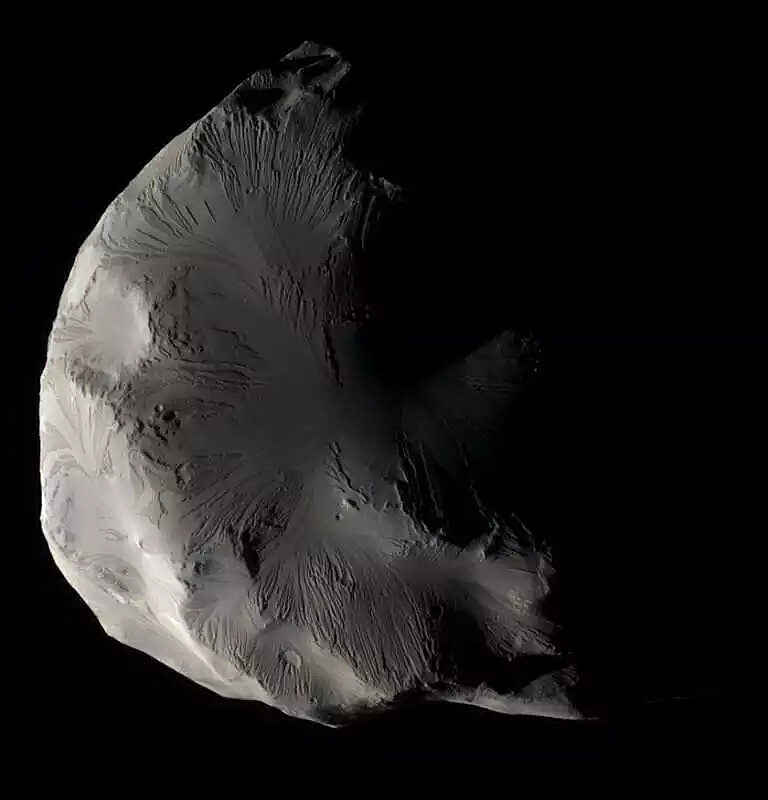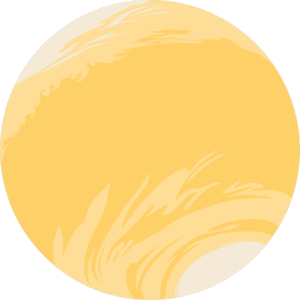The Downlink • May 19, 2023
Moon-spying missions and a planetary evil twin
Space Snapshot

Although they aren’t usually the primary subject of interplanetary missions, the moons of the outer planets are plentiful and fascinating. NASA’s Cassini spacecraft, which primarily studied Saturn from 2004 to 2017, captured this view of Helene in 2011 when it approached within 7,000 kilometers (about 4,300 miles) of the tiny moon, which is about 30 kilometers (18 miles) across. Helene’s sunlit face always faces Saturn and is covered with strange gully-like features that scientists are still trying to understand. Image credit: NASA/JPL-Caltech/SSI/Daniel Macháček.
You love space, now take action
This weekly newsletter is your toolkit to learn more about space, share information with your friends and family, and take direct action to support exploration. Anyone can subscribe at planetary.org/connect to receive it as a weekly email.
Mission Briefings


Juno has begun its observation of Io. The NASA mission, which has been studying Jupiter from orbit since 2016, has turned its sights to the innermost of Jupiter’s large moons. Over a series of flybys, the spacecraft will observe Io’s volcanoes, measuring how often they erupt, how bright and hot they are, their groupings, and the shapes of their lava flows. Pictured: An image from a March 1, 2023, flyby. Image credit: NASA/JPL-Caltech/SwRI/MSSS/Kevin M. Gill.

The Juice spacecraft has deployed a previously stuck antenna. ESA’s mission to Jupiter’s icy moons was facing problems after the antenna on one of its instruments failed to deploy after its April launch. Mission engineers finally managed to deploy the antenna using another moving part on the spacecraft to dislodge a jammed pin.

Saturn’s rings may be younger than previously thought. New research using data from the Cassini spacecraft suggests that the giant planet’s iconic set of rings may have only formed less than 400 million years ago, over 4 billion years after the planet itself formed. The rings may also be short-lived in cosmic terms; the system of dust and small rocks circling the planet may only persist for another few hundred million years.
From The Planetary Society


Why is Venus called Earth’s twin? Although Venus and Earth have many differences, they're often called twins because of some key similarities. Looking back at the two planets' early history, the similarities run even deeper. Find out what makes these planets so alike, and decide for yourself which one might be considered the evil twin. Pictured: A side-by-side comparison of Venus and Earth. Image credit: USGS/NASA.

Young minds are naturally curious, and the Cosmos is the perfect fuel for that curiosity. In this week's episode of Planetary Radio, we talk to educators who inspire a passion for exploration among the next generation of space enthusiasts and explorers.

The Humans to Mars Summit took place in Washington, D.C., this week. Former Planetary Radio host Mat Kaplan co-anchored the event, which featured presentations and panel discussions with experts from around the world who are working to advance the exploration of the red planet. Watch recordings of the event’s myriad sessions online for free.
What's Up

Venus is almost at its highest point in the evening western sky, looking very bright. Mars is growing closer to it, significantly dimmer and reddish, higher in the sky. Jupiter is starting to make its way up in the predawn east, still quite low, with Saturn higher up. Below Jupiter, Mercury is starting to appear very low to the eastern horizon right before sunrise. Find out what else to look for throughout the rest of May.
Wow of the Week

Back when Venus had abundant water on its surface, what might a map of the planet have looked like? Data scientist Alexis Huet used topographical information about our sister planet to measure how much of the surface would be submerged if current-day Venus were covered in the same amount of ocean water as Earth. Image credit: Alexis Huet.
Send us your artwork!
We love to feature space artwork in the Downlink. If you create any kind of space-related art, we invite you to send it to us by replying to any Downlink email or writing to [email protected]. Please let us know in your email if you’re a Planetary Society member!


 Explore Worlds
Explore Worlds Find Life
Find Life Defend Earth
Defend Earth


